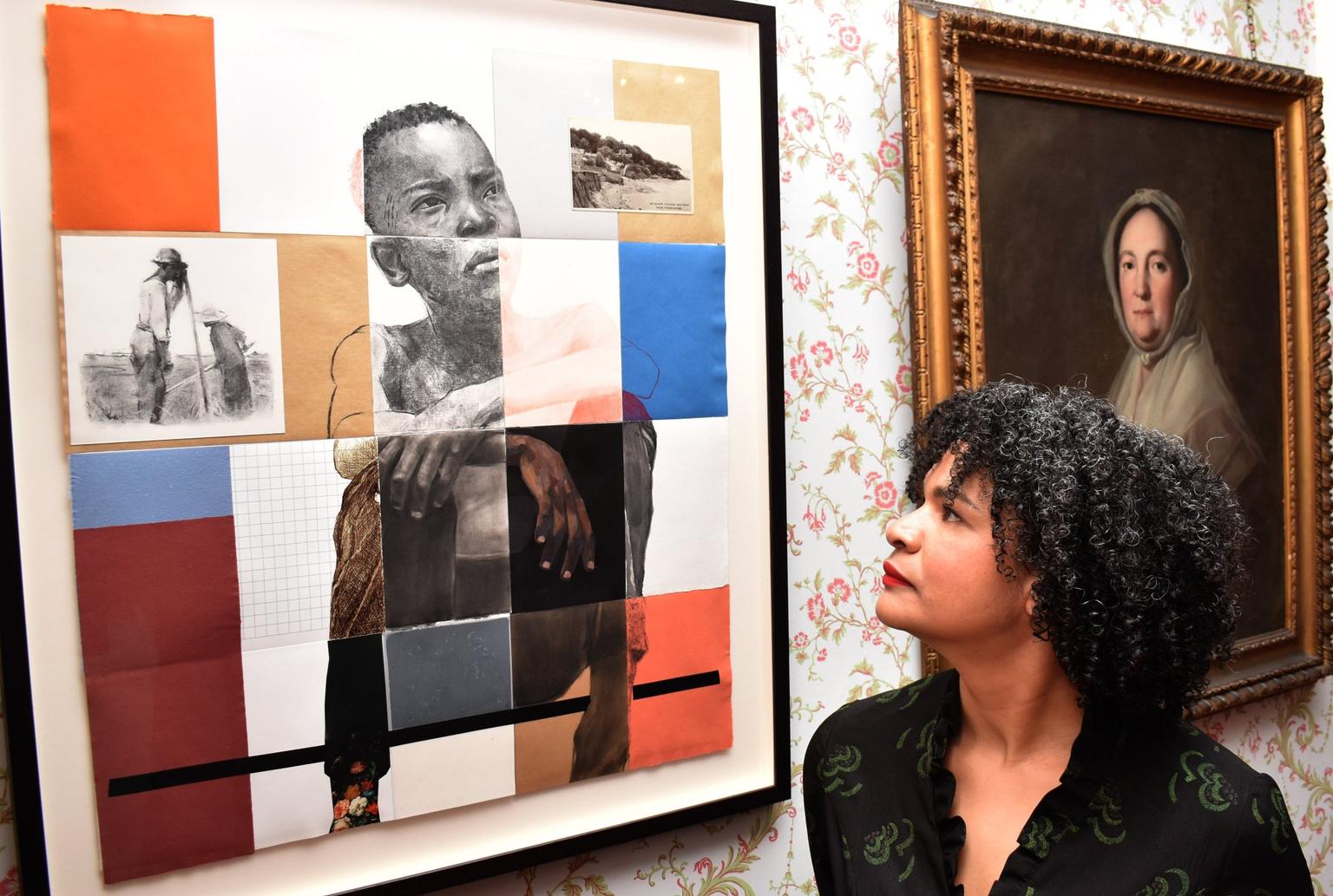Lela Harris on reclaiming lost Black identities

With Art Fund support, artist Lela Harris has created a series of works that dignify the lives of enslaved Africans in 18th-century Lancaster.
A version of this article first appeared in the autumn 2023 issue of Art Quarterly, the magazine of Art Fund.
Enabled by an Art Fund Reimagine Grant, Judges’ Lodgings in Lancaster is confronting the city’s history as a major slave-trading port through a powerful exhibition of portraits of enslaved people who lived in the area in the 1700s. ‘Facing the Past: Black Lancastrians’ at Judges’ Lodgings Museum comprises six intimate portraits by artist Lela Harris based on archival research into church records, runaway slave adverts and family stories.
It was a fine balance to create resonant works without, she says, ‘perpetrating what many people call the misery narrative of enslaved Africans. I tried to focus on them as people rather than what was done to them. I think there’s defiance, dignity and agency in the portraits. They’re accessible in lots of different ways, rather than just showing one face of being enslaved.’
Lancaster merchants invested in selling an estimated 30,000 enslaved Africans through the Atlantic slave trade. The exhibition includes portraits of several Lancaster families who benefited from slavery and trade in goods produced in Caribbean plantations.
Harris, who is self-taught, worked with the museum, the Lancaster Black History Group, the Institute For Black Atlantic Research at University of Central Lancashire and the Sociology department at Lancaster University to select the portrait candidates. The individuals they settled on finally were: Thomas Anson, ‘Ebo Boy’, John Chance, Isaac Rawlinson, Frances Elizabeth Johnson and Molly.
Anson, from nearby Dent, who escaped his enslaver and is believed to have evaded capture by joining the 4th Dragoons as a trumpeter, is depicted in oil with a demeanour of calm intelligence.
Molly, whose limited records show she was baptised and buried a month apart, is evoked in dark-blue pastel on Italian orange paper with a bright, anxious young face. (Molly has an oblique link to the Judges’ Lodgings since Lancaster’s Custom House – now the Maritime Museum – was built the year she died, 1764, by furniture-company founder Richard Gillow and the museum has a sizeable collection of Gillow furniture.)
Johnson was brought over from St Kitts and described by her enslavers Mary and John Satterthwaite as ‘a beloved servant’, but, Harris says, ‘she was so beloved that, according to oral family history, after she died they kept her hand above the mantelpiece like a Victorian stuffed pet’. In her expressive portrait, the artist homed in on her face to avoid drawing attention to her hand. ‘The intensity is in her gaze. I wanted to show a quiet resilience. She looks sad but she’s resolved to the life she’s found herself in.’
The works vary in terms of medium – some are in oil, others pastel or mixed-media collage – and are placed in conversation with portraits of Lancaster slave merchants from the museum’s collection. The portrait of Johnson is displayed near John Satterthwaite’s father, Benjamin Satterthwaite, while Harris’ cropped pastel portrait of Isaac Rawlinson hangs alongside a painting of enslaver Abraham Rawlinson by the 18th-century portraitist George Romney. Another Rawlinson, Mary, is juxtaposed with a captivating collage portrait of ‘Ebo Boy’, a young African enslaved by a reverend, who ran away, aged 16.
As part of the project, Harris conducted several workshops with schoolchildren together with teacher Geraldine Onek, a co-founder of Lancaster Black History Group. Harris invited the children to create portraits of ‘Ebo Boy’ by drawing from newspaper ads that spoke of his limp and a lump on his forehead and by imagining his life. To reflect the young man’s African heritage the children dignified him with the name Afamefuna, meaning ‘my name will not be lost’ in Igbo. ‘They were really invested in him as a person, like somebody that they knew,’ says Harris. Around 60 of these vibrant portraits are also on display.
Harris was originally commissioned to create four portraits but made an additional two. At the time of writing, all six are in the process of being acquired by the museum in what has been a meteoric trajectory for Harris, who only began drawing four years ago. Her aim with this exhibition? ‘To celebrate those individuals as people and to remember, at the end of the day, they had families, friends, hopes and dreams, just like us.’
‘Facing the Past: Black Lancastrians’, Judges’ Lodgings, Lancaster, to 5 November. Free with National Art Pass.